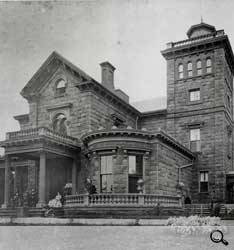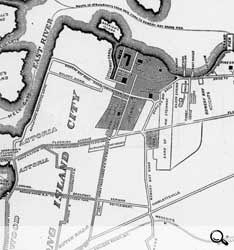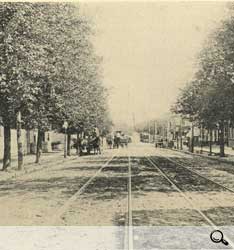

“To farm, where it is splendid, Mill & foundry in fine running order, three of the six houses are being roofed. Steinway Ave. making good progress.” —June 20, 1873, Diary Volume Three
Steinway Village: A Company Town
A desire to remove employees from Manhattan’s crowds,
particularly organized labor and “the machinations of the anarchists
and socialists,” inspired William to purchase 400 acres across the
East River in a bucolic, sparsely populated area of Astoria, New York.
With space for much-needed expansion, William set about creating
the company town of Steinway, where the firm could cast its own
piano frames and saw its own lumber. Steinway & Sons pianos are
still manufactured at this location.
William approached the development of Steinway with
characteristic thoroughness, wading through rainy salt meadows
in “great India rubber boots” inspecting property, overseeing
street surveys, and assessing employee housing construction later
advertised as “country homes with city comforts.” Diary entries
reflect William’s pride in creating a company town where workers
could own brick homes, drink fresh water, and stroll under shade
trees on Steinway Avenue—still the main thoroughfare in this part
of Queens. William donated land for a church and built a public
school, fire house, and post office to further his vision. A network
of horse-car railroads, streetcars, trolleys, and ferries provided access
to the settlement and brought in additional income. What would
become North Beach Amusement Park offered “respectable people”
an alternative to Coney Island and the chance to enjoy evening
festivities illuminated by the novelty of electric lighting.
Steinway family at the Steinway Mansion, 1881
Photographer unknown, Steinway, New York
Courtesy of Henry Z. Steinway Archive
William’s purchase of “a magnificent stone mansion” overlooking Bowery Bay provided the Steinway family with a country seat far different than the Lower Manhattan tenement they had occupied after their arrival from Germany.
Map of Steinway & Sons holdings in Astoria (at that time part of Long Island City), about 1874
From History of Long Island City, N.Y., 1896
Courtesy of Henry Z. Steinway Archive
Steinway Avenue, about 1881
From Illustrated Pamphlet on the Founding and Development of Steinway, N. Y. (Long Island City), published by Steinway & Sons
Courtesy of Henry Z. Steinway Archive
William chose this image to open a 31-page promotional pamphlet tying his development of Steinway Village into the larger myth-making of the Steinway & Sons story. Note the shade trees and streetcar tracks.



